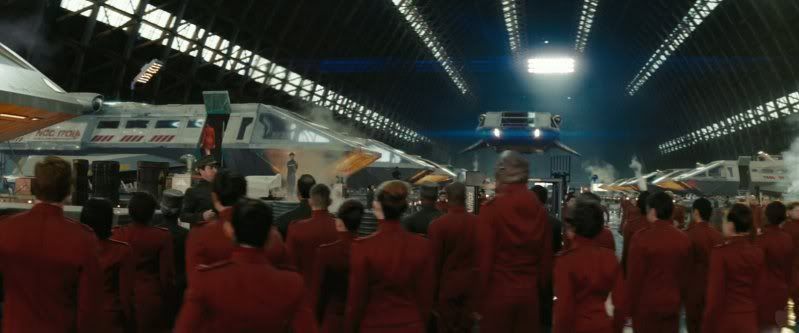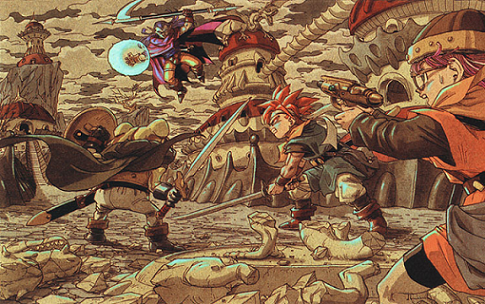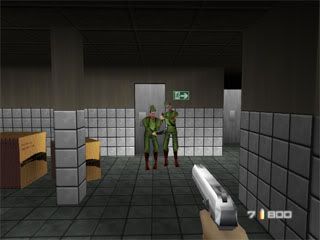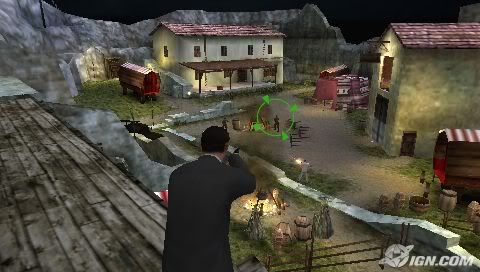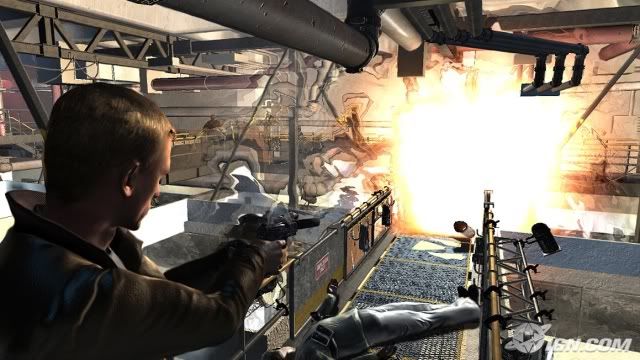
In the early days, during the arcade-era of the 1970s and early ‘80s, the sounds heard in games were primitive. These sounds were designed for a distinct marketing purpose, primarily employed to attract passers-by to the arcade machine. Technology constraints required programmers to make the most out of available hardware in order to produce memorable and ear-catching sounds. As computer technology improved, and consoles were produced small enough to enter the home, the sound of games changed. Sound was no longer utilized to compete with adjacent gaming platforms. In particular, game music was now designed to be played for an indeterminate amount of time without annoying the player. Consequently, many memorable 8-bit melodies were born from this necessity. Due to memory constraints, these 8-bit melodies were required to be short and loopable. Undoubtedly, this confined the compositional choices of the programmer.
Steve Jones writes that “popular music is, at every critical juncture of its history, determined by the technology musicians use to realize their ideas.” (Jones, 1) This seems to only be reaffirmed by my brief pre-history of game music, which demonstrates game development as being constantly directed by hardware limitations and intended purposes of the technology. In reality, this historical tendency can be seen in any mass-media. One only needs to look at the development of synchronized sound in film to verify this. W.K.L. Dickson is rumoured to have developed a crude method of synchronized sound as early as 1889, however it lacked the amplification required to be a feasible counterpart to spectacle of the moving image. It was not until World War I had spurred Europe’s technological development that certain sound-on-disc and sound-on-film techniques became viable options for studios and exhibitors. (Fairservice, 224) Historian Don Fairservice toys that “it is interesting to speculate how films might have evolved if they had been required to lock themselves to sound recordings from the very earliest days.” (Fairservice, 224) As Fairservice suggests, technological change has a profound impact on the content of the media. Steve Jones elaborates, “as the printing press enabled production of mass-circulation newspapers, which consquently affected newspaper content (for example, the inverted pyramid news story, the objective account, etc.), music technology affects the content of music during its creation as well as its consumption.” (Jones, 7) It is therefore interesting to consider how improved computer technology might affect the content of video game music.
Karen Collins explores this notion with a study of the Sega Genesis. Before the release of the 16-bit Sega Genesis in the late 1980s, the 8-bit Nintendo Entertainment System (NES) was by far the most dominant gaming system across the globe. Powerful contractual holds with developers, and the immense popularity of the Super Mario mascot ensured Nintendo’s worldwide success. (Collins, 39) However, the Genesis was technologically superior to the NES, which enabled the Genesis to threaten to Nintendo’s monopoly. Interestingly enough, part of this threat had to do with the sound of the Genesis. “Perhaps the most distinguishing feature of the Sega Genesis audio,” writes Collins, “was the adoption of progressive-rock stylistic traits.” (Ibid. 43) The Genesis was able to simulate the distinctive instruments of progressive-rock and apply the dynamic prog-rock sound to its games. While rock music at this point was no stranger to video game soundtracks, it seems that the release of the Genesis is a point of departure. Indeed, the Mega Man (1987) games (incidentally known as Rock Man in Japan) released on the NES in the late 1980s are commonly praised by many online critics for the composition of their 8-bit soundtracks. While simplistic in quality, the soundtrack for Mega Man emulates the energy and style of an ‘80s power-metal band, such as Iron Maiden. Nevertheless, Collins suggests that the melodic, dynamic, and yet epic soundtracks of the Genesis steered game music away from the noisy pop-like music that characterized most of the 8-bit era.

In fact, much of the marketing for the Genesis surrounded rock iconography. Many of the television ads for the Genesis associated Sega’s system with speed, volume, youth, and rebellion—all tropes which are commonly associated with rock music. One such ad features a sleazy middle-aged store clerk attempting to sell a NES to a spunky but “cool” teenage boy. No matter how hard the clerk tries to sell the NES, the boy is persistently attracted to the Genesis, which the voice-over describes as having “more action, more speed.” Sega’s mascot Sonic the Hedgehog also conforms to this image, embodying explicit rock ‘n’ roll attitudes. He moves fast, taps his foot impatiently if the player puts down the controller for too long, and in later depictions speaks with a real attitude problem. Such rebellious behaviour is most often associated with a rockstar, not a hedgehog.

At the time of the Genesis’ release, rock music in general was experiencing a revival in North America. As the economy faltered, baby-boomers felt disillusioned and looked back on the 1960s as a time when music could make a difference. (Szatmary, 297) Artists such as Bruce Springsteen and U2 would emerge from this climate of frustration. The advent of the compact disc (CD) would also prompt record companies to re-release countless classic rock artists, further promoting this popularity of rock music in North America. (Szatmary, 308) It can be assumed that this popularity of rock music indirectly profited Sega by making the youthful and edgy Genesis seem like the “cool” thing to buy.
In response to the success of the Genesis, Nintendo released its own 16-bit system, the Super Nintendo Entertainment System (SNES). Released in 1991, the SNES surpassed the Genesis graphically and aurally. Though Collins (and likely the Genesis marketing team) suggests that the SNES maintained the “distinctly ‘chip-tune’ and poppy” (Collins, 47) musical aesthetic of the 8-bit NES, I want to suggest differently. Early SNES games offer a wide variety of musical styles, departing drastically from the 8-bit format of the NES. Fantasy epics such as Legend of Zelda: A Link to the Past (1991) and Final Fantasy VI (1994) emotionally engage the player with symphonic pieces comparable to those heard in a film. Likewise, some of the music in Chrono Trigger (1995) sounds as though it was written and recorded by Pink Floyd, while one track in Secret of Mana (1993) closely resembles “Ramble On” by Led Zeppelin in both sound and style. Mega Man X (1993) revived the Mega Man franchise of the NES, returning the famed rock-style soundtrack from the original games. This time around programmers were able to simulate the guitar, bass, and drum sounds more accurately, creating a upbeat, hard-hitting musical experience for the player. While Sega took the turn towards rock aesthetics, Nintendo shortly followed, effectively completing the alignment of video games with the tropes of rock ‘n’ roll.
When envisioning the relationship between video games and rock music I am instantly reminded of a particular scene in Terminator 2 (1991) which was incidentally released the same year as the SNES. In the film, a teenaged John Connor is riding a motorbike to a video game arcade. As he drives recklessly through the city streets, he blasts “You Could Be Mine” by Guns ‘N’ Roses. Connor is meant to represent a rebellious youth, living fast, listening to rock, and playing video games. The 1992 television game show Nick Arcade (1992-1993) also demonstrated the relationship between rock and games which was developing at this time. This was a show that was predominantly video game themed, ultimately requiring players to face a gauntlet of obstacles in a crude but effective virtual reality simulator. The game show had flashy setpieces, an explosively energetic host, and was constantly accompanied by wailing rock guitar cues. These examples only demonstrate the rock sensibility that would proliferate throughout game imagery of the the early-to-mid ‘90s.
This alignment of rock and video games undoubtedly plays a part in the popularity of games like Rock Band, Guitar Hero, and Brütal Legend, and contributes to rock aesthetics found in many other contemporary games. Only now do we see developers such as Nintendo stray from these aesthetics in hopes of attracting non-gamers who may be intimidated by or uninterested in the rock image that I have described. The box-art for Wii Fit (2008), a game for the Nintendo Wii meant to promote health and fitness, shows a woman performing yoga before a glowing white background. The serene box-art of Wii Fit may not attract the young rebels of today, however it has proven to be a popular choice among non-conventional gamers, having sold 22 million units since its release. (http://www.vgchartz.com/)

Interestingly, there are now a number of independent rock bands emerging primarily on The Internet who inversely align themselves with the 8-bit pre-Genesis sound of the Nintendo Entertainment System. While rock bands in nature, groups such as Game Over, Powerglove, The Minibosses and The Protomen interest themselves in not only writing songs about 8-bit video games, but also borrowing the melodies or aesthetics of the distinct NES “pop” sound. The Protomen have recorded two albums to date, which chronicle an elaborated version of the Mega Man narrative in true rock-opera fashion. While having a mainly guitar-driven sound, The Protomen make heavy use of synthesizers. At times their music resembles that of Canadian prog-rock band Saga, and at other times Bruce Springsteen. Often their music resembles the soundtrack of Mega Man itself. Lyrically, they adapt Mega Man iconography to convey messages of revolt, individuality, and freedom from oppression—themes which are reminiscent of the cause-oriented rock ‘n’ roll of old.

Here we see the completion of a cycle. In the late ‘80s technological advancement allowed the Sega Genesis to break from the 8-bit mould and present players with an exciting, rock-flavoured side of video games. Now, decades later, we see rock musicans who nostalgically draw on this 8-bit technology, appropriating its aesthetics. Similarly, many contemporary Nintendo games feature nostalgic easter eggs which make reference to various aspects of the 8-bit era. No matter the aesthetic changes that games undertake, as markets shift and technology develops, we can rest assured knowing the video games will always rock.
Works Cited:
- Collins, Karen. Game Sound: An Introduction to the History, Theory, and Practice of Video Game Music and Sound Design. Cambridge: The MIT Press, 2008.
- Fairservice, Don. “Sounds Promising.” Film Editing: History, Theory and Practice. New York: Manchester U. Press, 2001. 223-248
- Jones, Steve. Rock Formation: Music, Technology, and Mass Communication. London: Sage Publications, 1992.
- Szatmary, David. A Time to Rock: A Social History of Rock ‘n’ Roll. New York: Schirmer Books, 1996.
- “Wii Fit,” VGChartz. 2005. VG Chartz LTD. July 28, 2009. http://www.vgchartz.com/games/game.php?id=7480®ion=All

